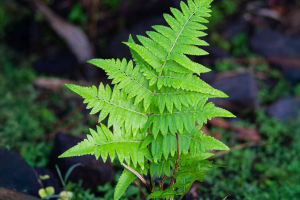Have you ever stopped to wonder how plants "breathe"? Unlike animals with lungs, plants don't have obvious organs for breathing, yet they constantly exchange gases with the air around them.
This happens through microscopic pores on their leaves called stomata—tiny gateways that open and close to regulate the flow of gases essential for photosynthesis and survival.
But how exactly do these stomata work, and why are they so important? Let's explore the fascinating world of plant gas exchange and the smart system that keeps plants thriving.
What Are Stomata and Where Are They Found?
Stomata (singular: stoma) are small openings primarily found on the underside of plant leaves, although they can also appear on stems and other green parts. Each stoma is surrounded by a pair of specialized cells called guard cells that control its opening and closing.
These tiny pores serve as the plant's lungs, allowing:
• Carbon dioxide (CO₂) to enter the leaf for photosynthesis
• Oxygen (O₂) produced during photosynthesis to exit
• Water vapor to leave through a process called transpiration
This exchange is crucial because it fuels photosynthesis—the process by which plants convert light energy into chemical energy—and helps regulate the plant's temperature and water balance.
How Do Stomata Control Gas Flow?
The magic lies in the guard cells surrounding each stoma. These cells can change shape by absorbing or releasing water, which makes the pore open or close.
Here's how it works:
1. When the plant has plenty of water, guard cells take in water and swell, bending outward. This opens the stomatal pore.
2. When water is scarce, guard cells lose water and become flaccid, causing the stomata to close.
This regulation is a smart survival mechanism—keeping stomata open lets in CO₂ for photosynthesis but also risks losing too much water. Closing stomata conserves water but limits CO₂ intake, so plants constantly balance these needs depending on the environment.
Why Is Gas Exchange Vital for Plants?
Gas exchange through stomata is essential for two main reasons:
1. Carbon Dioxide Intake for Photosynthesis:
Photosynthesis requires CO₂ to produce glucose—the energy source plants use for growth and reproduction. Without open stomata to absorb CO₂, photosynthesis slows or stops.
2. Oxygen Release and Temperature Control:
Oxygen generated as a byproduct leaves through stomata, preventing toxic buildup inside the leaf. Additionally, transpiration—water vapor loss through stomata—cools the plant, much like sweating cools humans.
Without stomata functioning properly, plants would either suffocate internally or overheat and dehydrate.
Plants Adjust Stomatal Behavior Based on Environment
Not all plants behave the same. They adapt their stomatal patterns and opening strategies depending on climate, habitat, and water availability.
For example:
• Desert plants often have fewer stomata or keep them closed during the hottest part of the day to reduce water loss.
• Aquatic plants may have stomata only on the upper leaf surface to exchange gases with the air.
• Some plants follow a day-night rhythm, opening stomata during daylight for photosynthesis and closing them at night.
This adaptability helps plants survive and thrive in diverse environments.
How Stomata Impact Agriculture and the Environment
Stomata don't just keep plants healthy—they also affect larger systems:
1. Crop Efficiency: Breeders look for plants with stomatal traits that optimize water use, especially in drought-prone areas.
2. Carbon Cycle: Stomatal activity influences how much CO₂ plants absorb globally, impacting climate regulation.
3. Water Use: Understanding stomata helps improve irrigation practices, conserving water while supporting plant growth.
Recent research, such as studies published in Plant Physiology, is exploring ways to engineer crops with stomata that can respond faster or more precisely to environmental changes, boosting resilience against climate challenges.
Looking Closer at Life's Tiny Gateways
Next time you feel the breeze rustling through leaves, remember those microscopic stomata quietly doing their job. These tiny pores—smaller than a grain of sand—are at the heart of plant life, controlling the delicate exchange of gases that powers growth and sustains life on Earth.
If you grow plants at home, watching how they respond to watering and sunlight can give you clues about how their stomata behave. Have you noticed leaves curling during hot days or glistening with moisture in the morning? These subtle signs connect back to the incredible stomatal system working silently all along.
So, what surprises you most about how plants "breathe" through their leaves?


